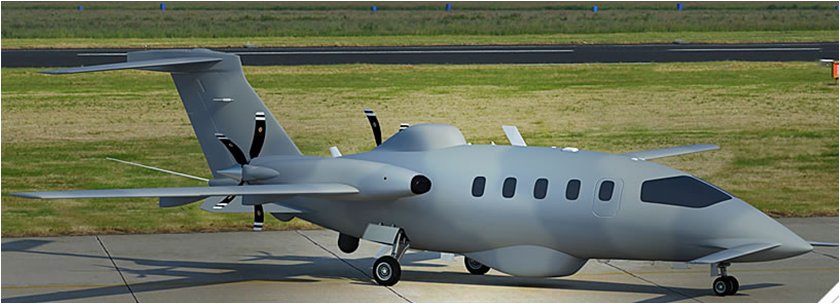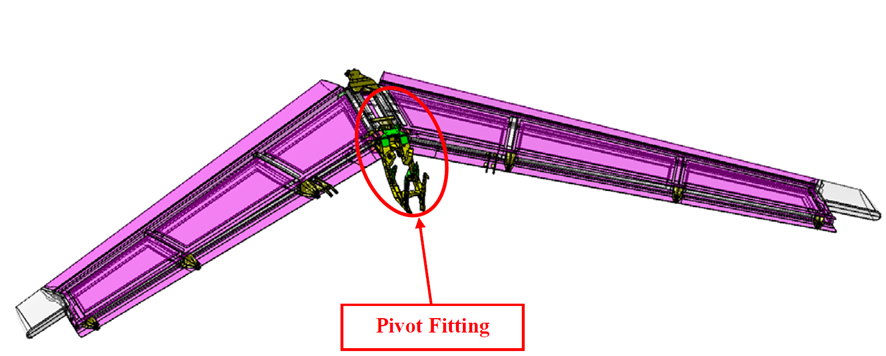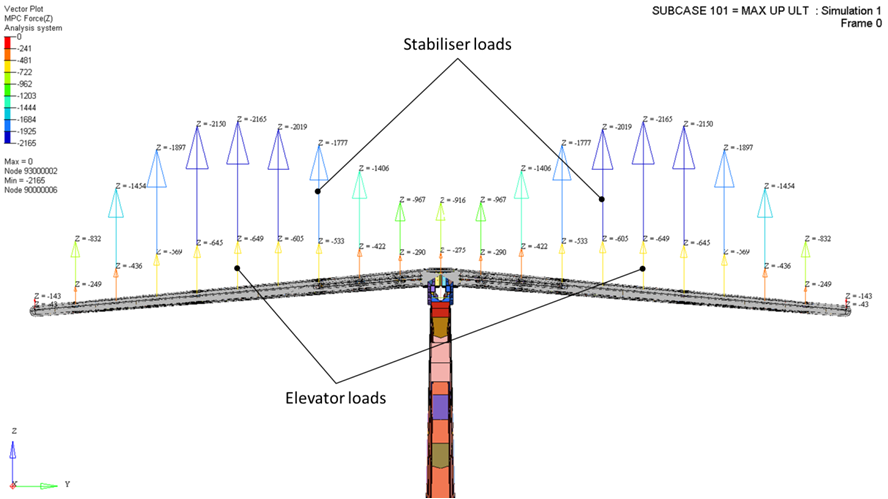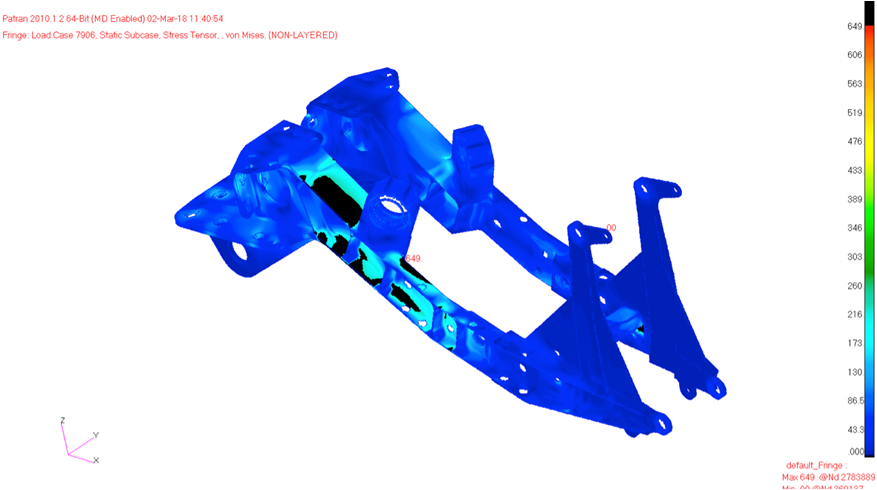A trade off study has been performed to compare stress analysis results of the Piaggio MPA (Maritime Patrol Aircraft) pivot fitting and yoke assy (Fig. 1), that connect the composite horizontal stabilizer to the vertical tail, changing the actual machined titanium alloy part into a machined Mg+REE alloy one. The Piaggio Aerospace MPA is a manned Multirole Patrol Aircraft, designed as an evolution and development of the P.180 Avanti II for Special Mission applications. The aircraft is intended for aerial surveillance missions as well as ground, coastal and marine patrols. (Piaggio MPA is shown in the heading of this news)
Fig. 1 Pivot fitting and yoke assy
Those metallic parts have been redesigned using loading requirements for the symmetric and asymmetric manoeuvre conditions (i.e.: Top Roll Moment), applied to the HTP. The considered operational condition load cases have been multiplied by a factor of 1.5 to derive the ultimate values accoring to EASA regulation (CS 23.303).
The trade off analysis on metallic components has been carried out separately from the main HTP finite elements model, using a dedicated refined 3D FEM (Fig. 3). One of the considered use cases is depicted in the following figure 2:
In this context, a titanium alloy assessment (in Metallic Components Strength and mitigation) has been performed. The titanium alloy components were analysed according to the Metallic Strength Analysis Method. The weight of the machined component is 4.8 Kg. Taking into account an indicative price of titanium alloy raw material of 45 €/Kg , and a scrap of about 90% during machining, the cost is:
Total raw material weight = 48 Kg
Raw material cost = 2160 €
These results were compared against the “Remaghic Mg alloy”.
The black zones, shown in Fig. 3 below, represent an intermediate result in which the local areas where the applied von Mises stress exceeds the ultimate material allowable and that need to be thickened.
The resulting weight of the machined “Remaghic Mg alloy” component is 2.32 Kg.
Fig. 3 Refined 3D FEM
Piaggio Aerospace is taking into account the experimental Remaghic Mg-REE alloy whose nature prevents an official market alloy commercial cost; therefore no indicative price of Mg alloy raw material can be estimated with reliable margin of error.
Anyway, the Remaghic feasibility and business assessment has targeted a 3€/kg alloy.
While it is sure that the introduction of these alloys in the aeronautic industry, would potentially bring additional qualification material costs, still the comparison of 3€/Kg (Remaghic Mg-REE alloy) against 45€/kg of titanium leads us to believe this is a promising a result.
It is safe to assume that, during the machining manufacturing process, the component will result in a scrap of about 90% leading to a :
Total raw material weight = 23.2 Kg
Since HTP pivot fitting is clearly critical for aircraft safety, and any major variation in shape and geometry is strictly limited by EASA/FAA certification rules, surely the supposed material change would probably affect not only the above-mentioned under estimated thickness areas (Fig. 3).
As a conclusion, the resulting theoretic 48% of weight reduction is indeed too optimistic, however a 30% would be achievable and more realistic. This result paves the way for further research and fostering new Mg alloys in this sector.





Recent Comments